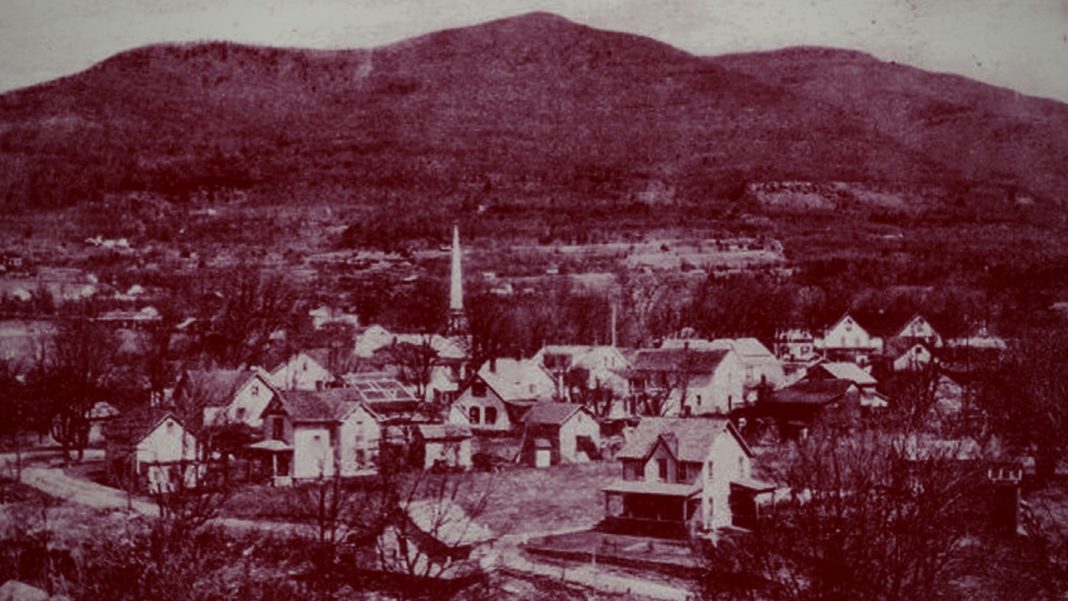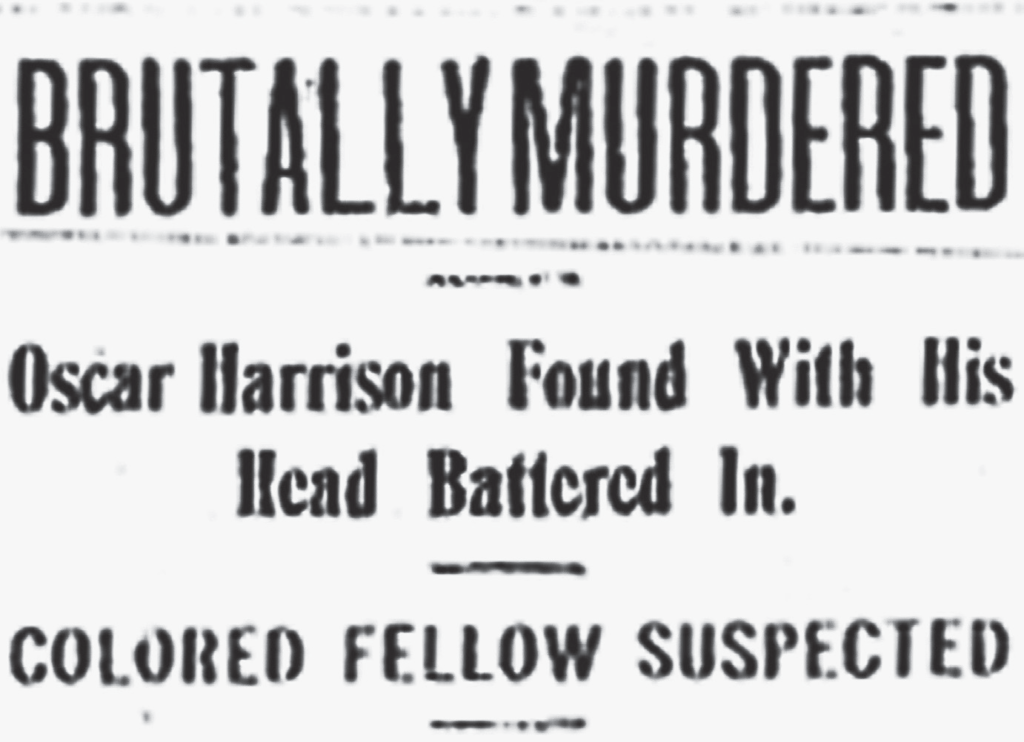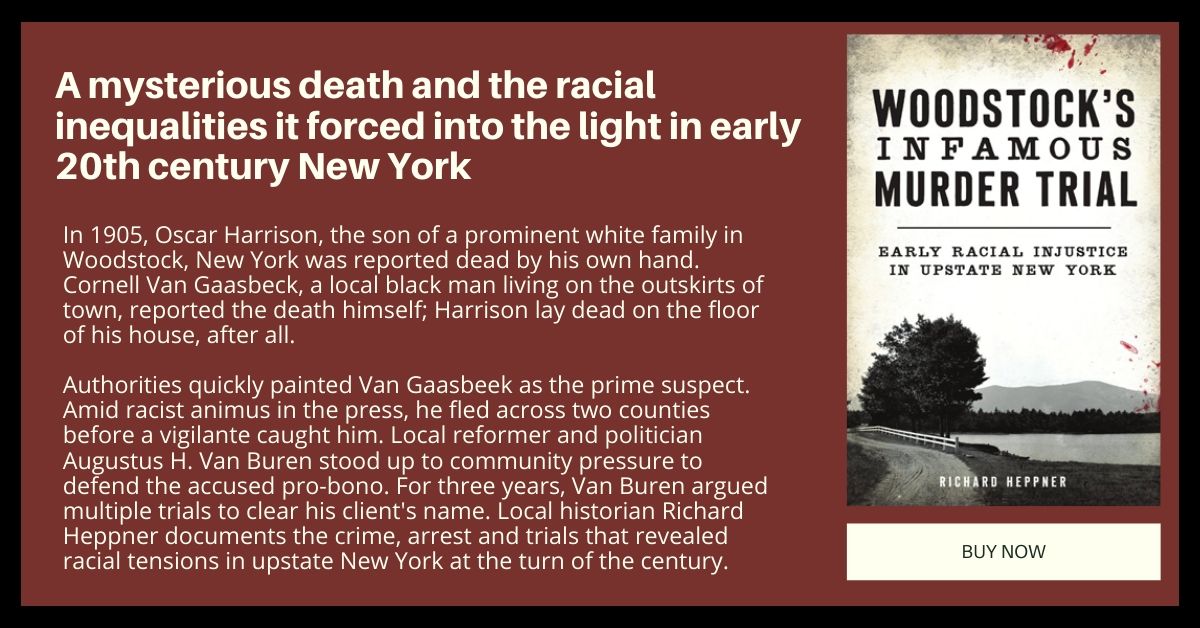
Self-taught Sherlock: Woodstock’s Amateur Detective
In his book Woodstock’s Infamous Murder Trial: Early Racial Injustice in Upstate New York, author Richard Heppner explores one of the first major crimes to strike the sleepy village that would later become the symbol of 1960s counterculture. In the early 1900s, though, Woodstock was as quaint a rural village as Norman Rockwell ever could have dreamed.
Until, that is, the body of twenty-three year old Oscar Harrison, a local white superintendent’s son, was found slain in the home of Cornell Van Gaasbeek, an African-American man of Harrison’s acquaintance. Understandably, the news of the crime rocked the small-town community, from its grisly methods (a bloodied hammer was found nearby) to the mysteries of their association. Suspicion immediately fell on van Gaasbeek, but like other alleged criminals we’ve covered, he had already fled the scene.

Enter Roosa: The Mechanic Sherlock of Woodstock
Rubberneckers. Gawps. Busybodies. Call ‘em what you want, it doesn’t matter: they’re the worst. Always sticking their noses into other people’s business, interfering on some kind of personal crusade. Thinking they’re entitled to know what’s going on, even when, nine times out of ten, they’re just getting in the way. But every now and then you get a diamond in the rough: someone who bucks the trend, steps in to actually lend a hand. Allow us, then, to introduce you to one Everett Roosa, of Woodstock, New York.
According to Heppner, Roosa, a local mechanic, despite having no formal training, no law enforcement background, and no personal or professional attachment to the case, still somehow managed to wangle his way into a position with the Woodstock and Kingston authorities to go off in search of van Gaasbeek. Heppner: “…it seems that Roosa’s ‘expertise’ came, primarily, from being an avid reader of Sherlock Holmes mysteries. In fact, he would readily boost that he had read everything Conan Doyle had ever written.”

The thing was, Roosa wasn’t half-bad: not only did he unearth a letter van Gaasbeek had received from his sister, offering a clue to his possible location, but he came up with the idea to ask area schoolchildren, who would have spent considerable time outdoors, whether they had seen a man of van Gaasbeek’s description. Remarkably enough, some of them had, and by coordinating their accounts, within a couple of days Roosa was able to track his suspect down to the Catskills village of Purling, where he made the arrest.

But the story doesn’t end there.
As Heppner recounts, after a sensational trial, van Gaasbeek was found guilty of manslaughter, but his attorney, incensed at the lack of direct witnesses and the use of circumstantial evidence by the prosecution, appealed the conviction and secured a new trial for his client. Second time was the charm, and after a grueling re-examination of the evidence and testimony—including Roosa’s, given again from the stand—Van Gaasbeeck was eventually acquitted of the crime. Aged, worn, and suffering from two years in the harsh Dannemora Penitentiary (known as ‘Little Siberia’), Cornell van Gaasbeek was nevertheless a free man.
Now, the question remains: who killed Oscar Harrison? For that, you’ll have to read Heppner’s book. But Roosa? Believe it or not, his story has an (almost) happy ending too: later in life, Heppner says, Roosa did actually end up working in law enforcement. He became a temporary patrolman at the nearby Ashokan Reservoir, and eventually, a deputy sheriff. He might not exactly have been a Pinkerton, but you gotta admit—not bad for a self-taught Sherlock, was it?




